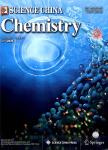Simple aspects of femtosecond stimulated Raman spectroscopy
Simple aspects of femtosecond stimulated Raman spectroscopy作者机构:Division of Physics & Applied Physics School of Physical & Mathematical Sciences Nanyang Technological University Singapore 637371 Singapore Division of Chemistry & Biological Chemistry School of Physical & Mathematical Sciences Nanyang Technological University Singapore 637371 Singapore
出 版 物:《Science China Chemistry》 (中国科学(化学英文版))
年 卷 期:2011年第54卷第12期
页 面:1989-2008页
核心收录:
学科分类:081704[工学-应用化学] 070207[理学-光学] 07[理学] 08[工学] 0817[工学-化学工程与技术] 070302[理学-分析化学] 0703[理学-化学] 0702[理学-物理学]
基 金:supported by the Ministry of Education Singapore and Nanyang Technological University Research Grants (T207B1222 &RG56/08)
主 题:femtosecond stimulated Raman spectroscopy temporal and spectral resolution cascade effect
摘 要:Femtosecond stimulated Raman spectroscopy (FSRS), using an overlapping pair of narrow band Raman pump and broadband probe pulses with heterodyne detection along the probe pulse direction, is a new nonlinear spectroscopic technique to record vibrational spectra of even highly fluorescent molecules and to study vibrational dynamics on excited electronic states of molecules, as in photoisomerization. FSRS is described by diagrammatic third-order perturbation theory with wave packet analysis. The phase matching condition gives rise to forty-eight terms for FSRS, but the resonant condition reduces it to just eight terms, which can be depicted by Feynman dual time-line diagrams, or closed time path loop diagrams, or the complementary four-wave mixing energy level diagrams. The eight terms fall into four sets-SRS(I), SRS(Ⅱ), IRS(I), IRS(Ⅱ)-where SRS stands for stimulated Raman scattering and IRS stands for inverse Raman scattering. The SRS(I) set can also account for spontaneous Raman scattering, but the remaining SRS(Ⅱ), IRS(I) and IRS(Ⅱ) terms are only present in stimulated scattering with the presence of a probe field. The SRS(I) set accounts for the Stokes Raman lines while the IRS(I) term accounts for the anti-Stokes lines, relative to the Raman pump frequency, in the FSRS spectrum. The remaining SRS(Ⅱ) and IRS(Ⅱ) terms give rise to broad baselines. Using a harmonic oscillator model, analytic results are obtained for the four-time correlation functions in the third-order polarizations. The issue of high time and high frequency resolution in time-resolved FSRS spectra is discussed. Calculations are made with the theory to compare with experimental results for: (a) resonance FSRS of fluorescent Rhodamine 6G and (b) 2D-FSRS from a coherent vibrational state that has been prepared by an impulsive, off-resonant pump pulse on CDCl3. The calculated results compared well with experimental results, and in the case of 2D-FSRS on CDCl3 there is a dominant cascade effect contribu



